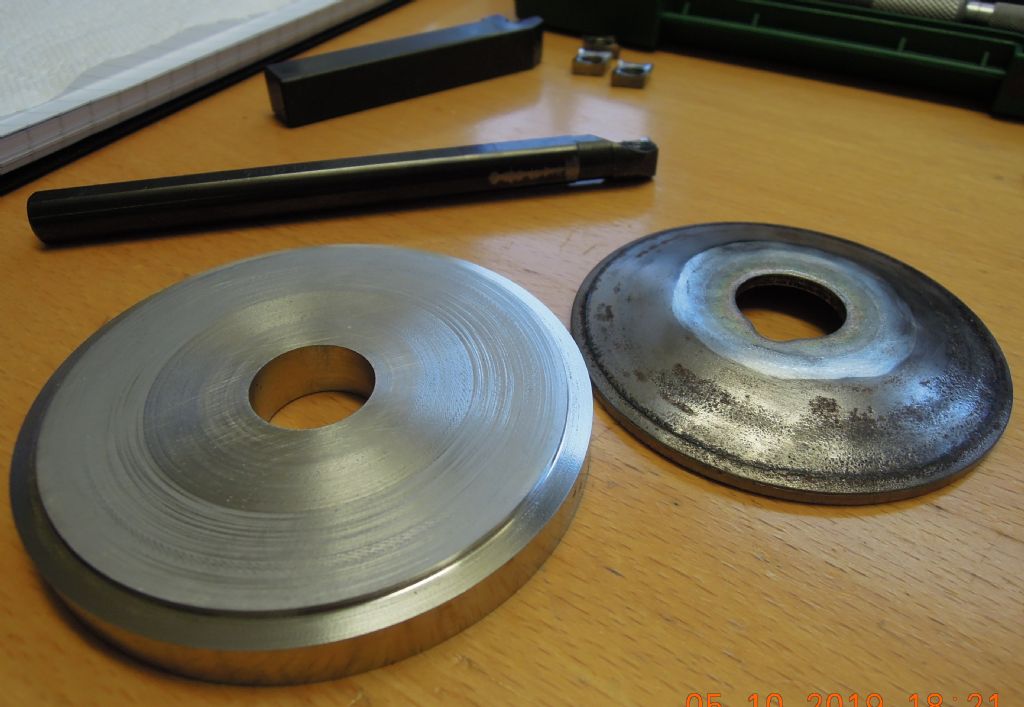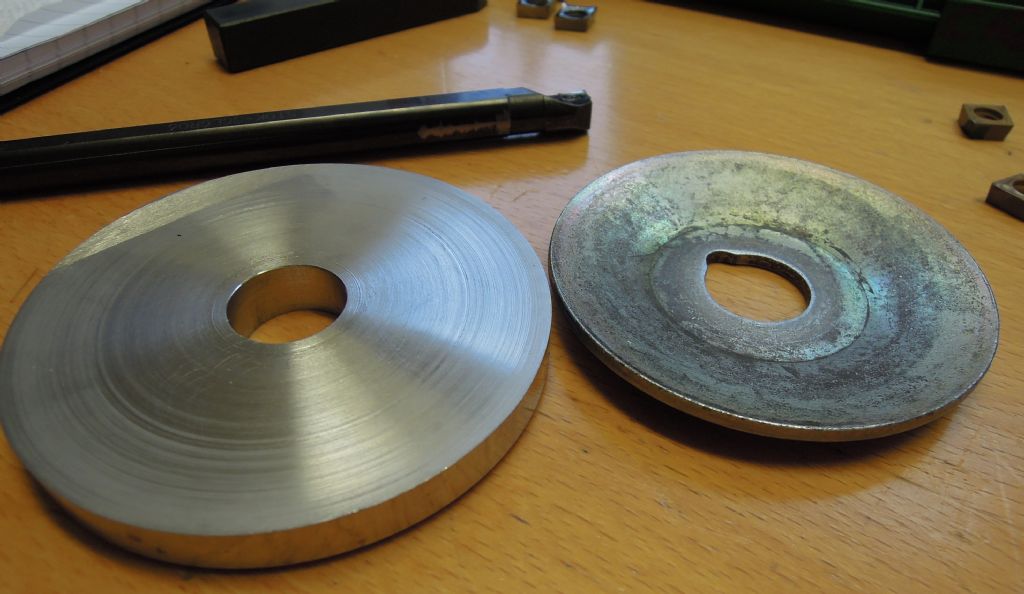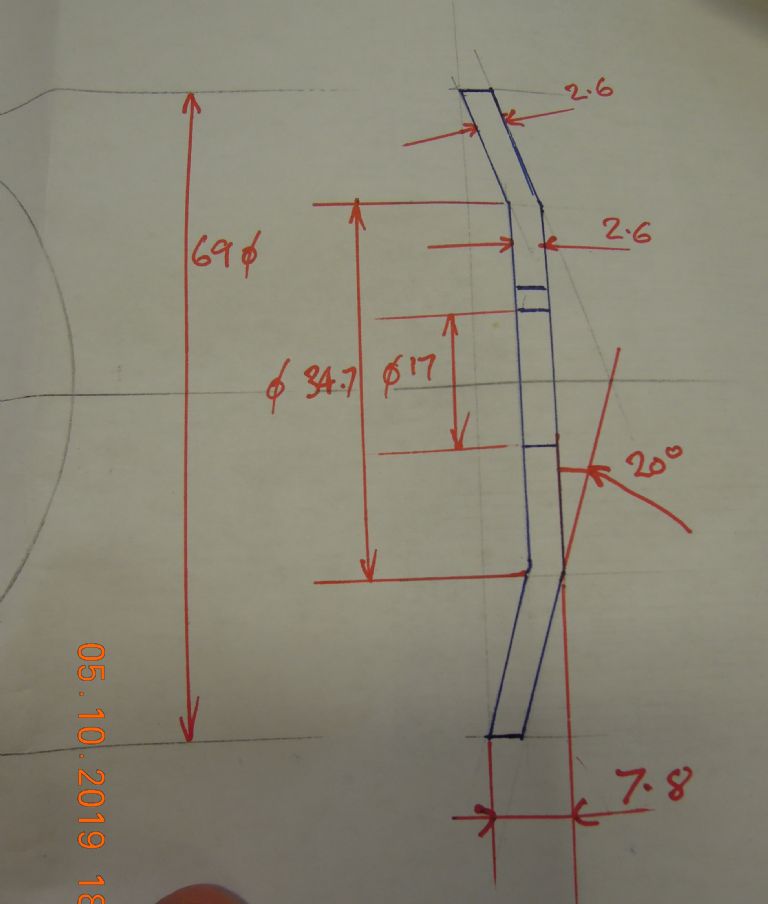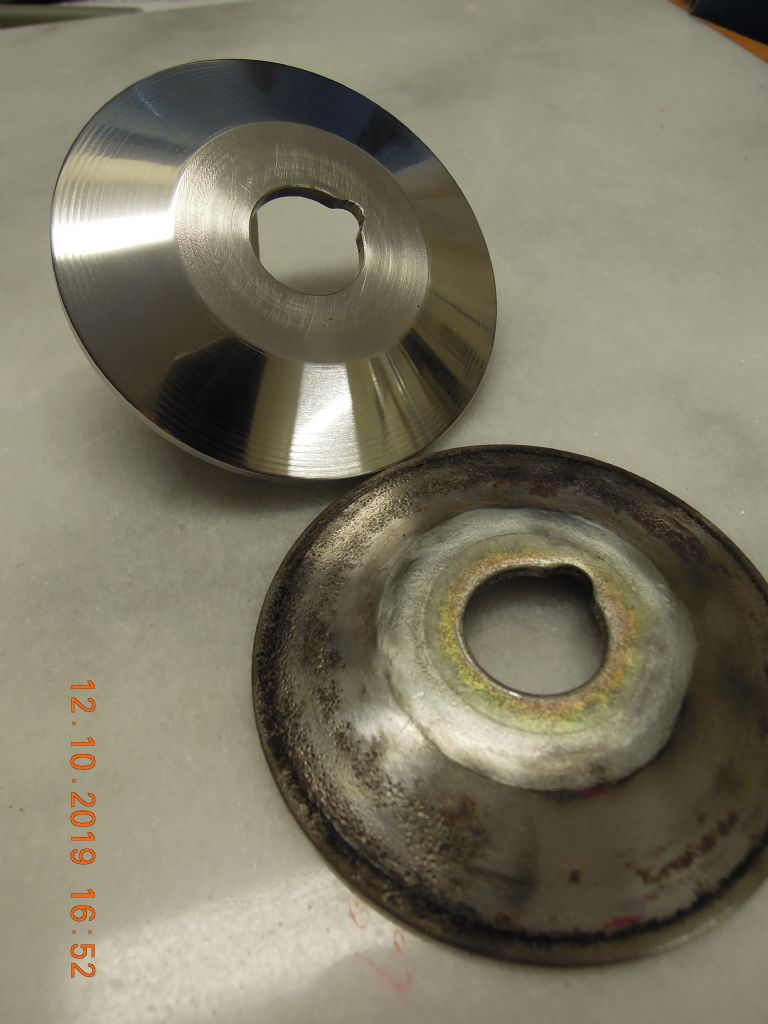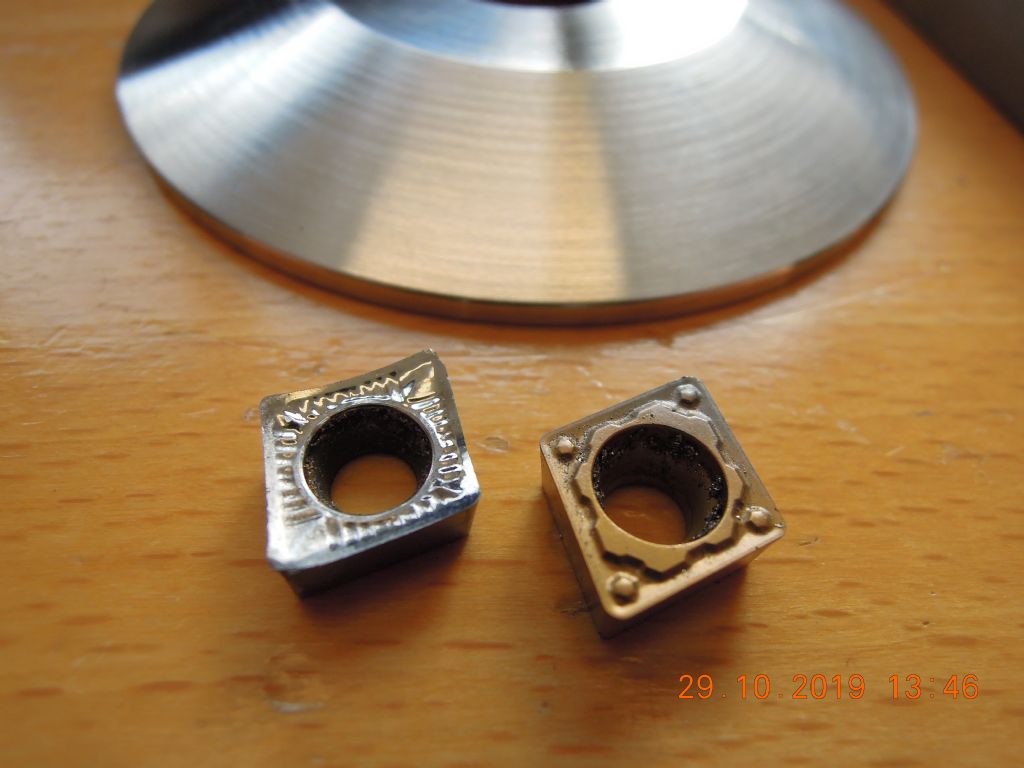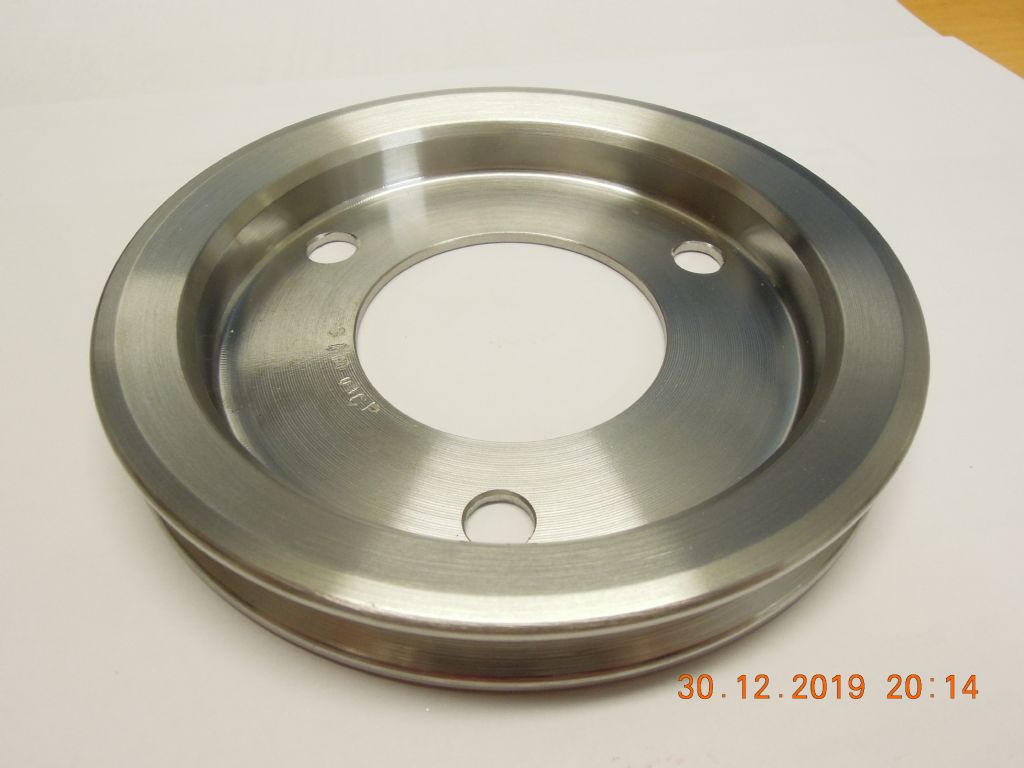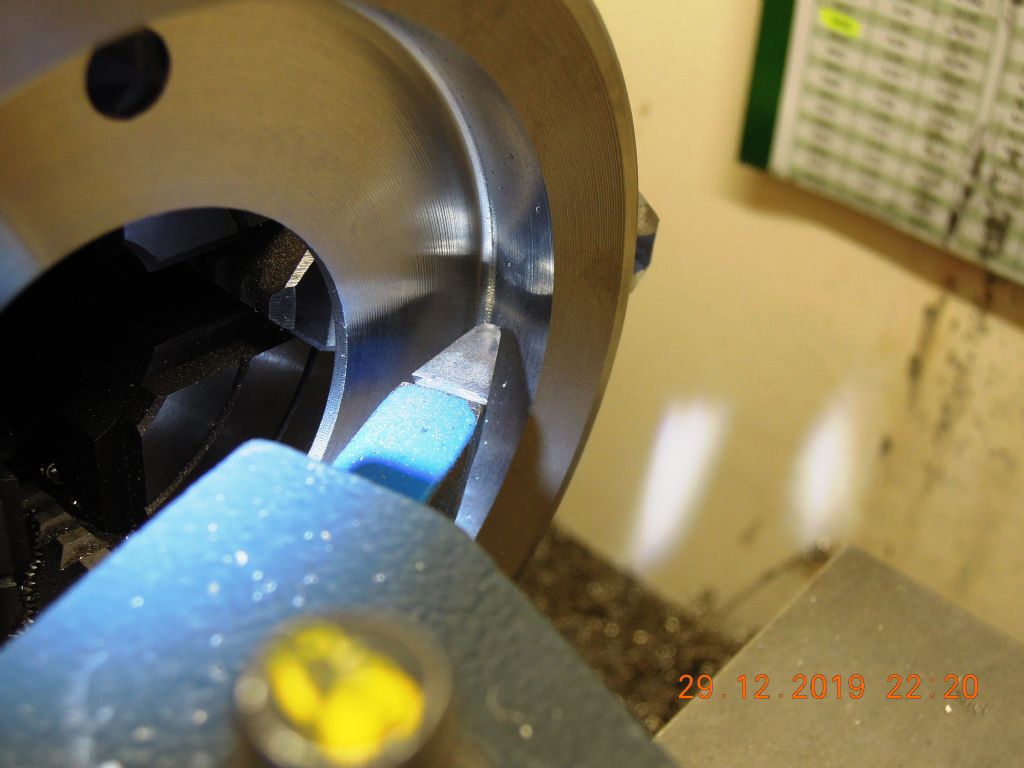First piece finished……

The biggest challenge firstly was the swarf. Horrible razor sharp stuff and you have to keep stopping to clear it or it gets caught in the rotation and flails around dangerously. I discovered that cutting slowly keeps it in more manageable spirals and later with a big pair of leather gloves you can crush it up nicely and reduce 3 carrier bag-fulls of the stuff into one.
Secondly the 20 degree flank angle meant the cross slide and top slide knobs tended to interfere and I had to work with the topslide almost at its positional limits. This meant that the slide was getting a bit loose in its gibs and caused the 1mm-pitched grooving you can see on the periphery. Its not really as bad as it looks in the picture so I'll run with this imperfection. But anyway I think I can avoid this on the next one with a bit more jiggery pokery.
The bolted mandrel was a fantastic success Hopper and worked perfectly. Not even a hint of slip at any time so.
The CCMT aluminium cutting tips worked beautifully at the lower speeds of 300~500RPM. At 2000~2500RPM they frequently chipped. I couldn't work out at first why the cutting quality became progressively worse until I looked at the cutting edges with a microscope and found the reason. This issue wasn't really obvious by eye.
Ian P, I think the reason for the severe wear might be the speed. I didn't think about this earlier but the engine runs almost continuously at a 5000RPM so the fan will be doing about twice that. I do know from the past when I've fitted new pully sheaves the system/belt is almost wear-less. So I don't think there is any other defects in the set-up like misalignment etc.
Now I just have to decide if I tackle the 2nd small pulley or have a go at making the large one…..
Gerry
gerry madden.


